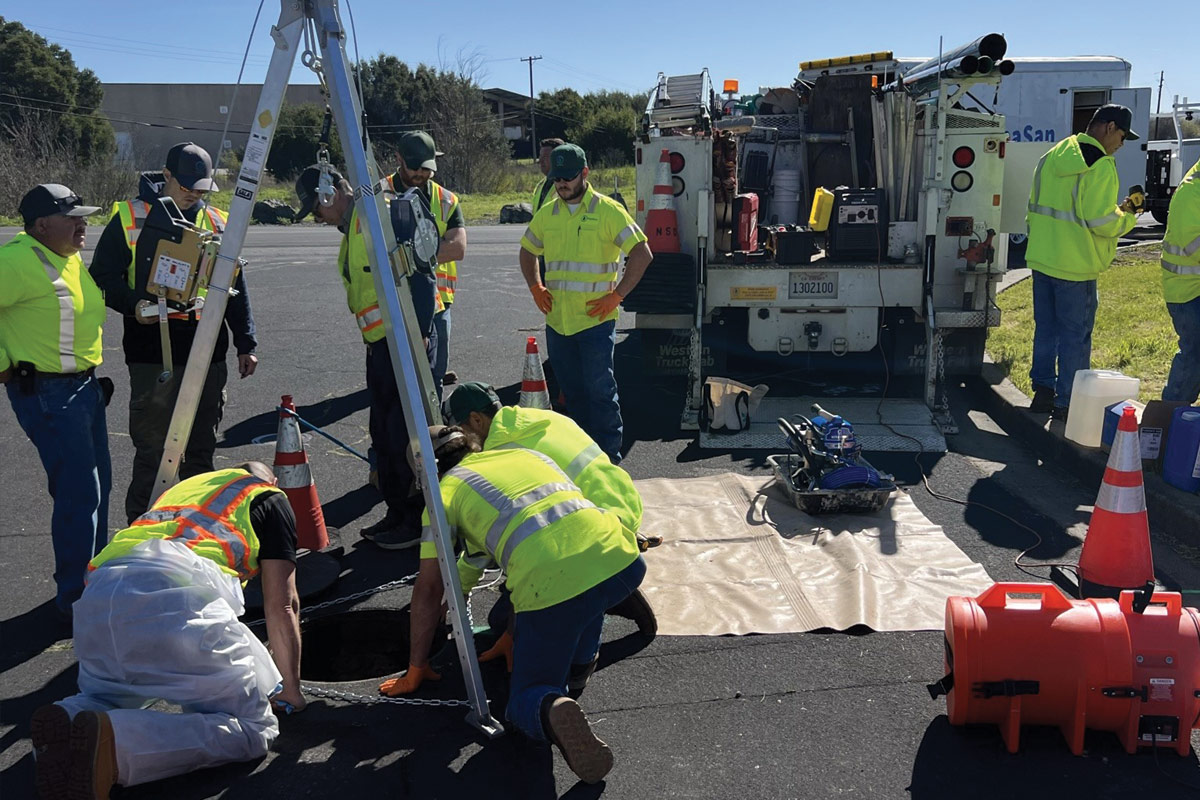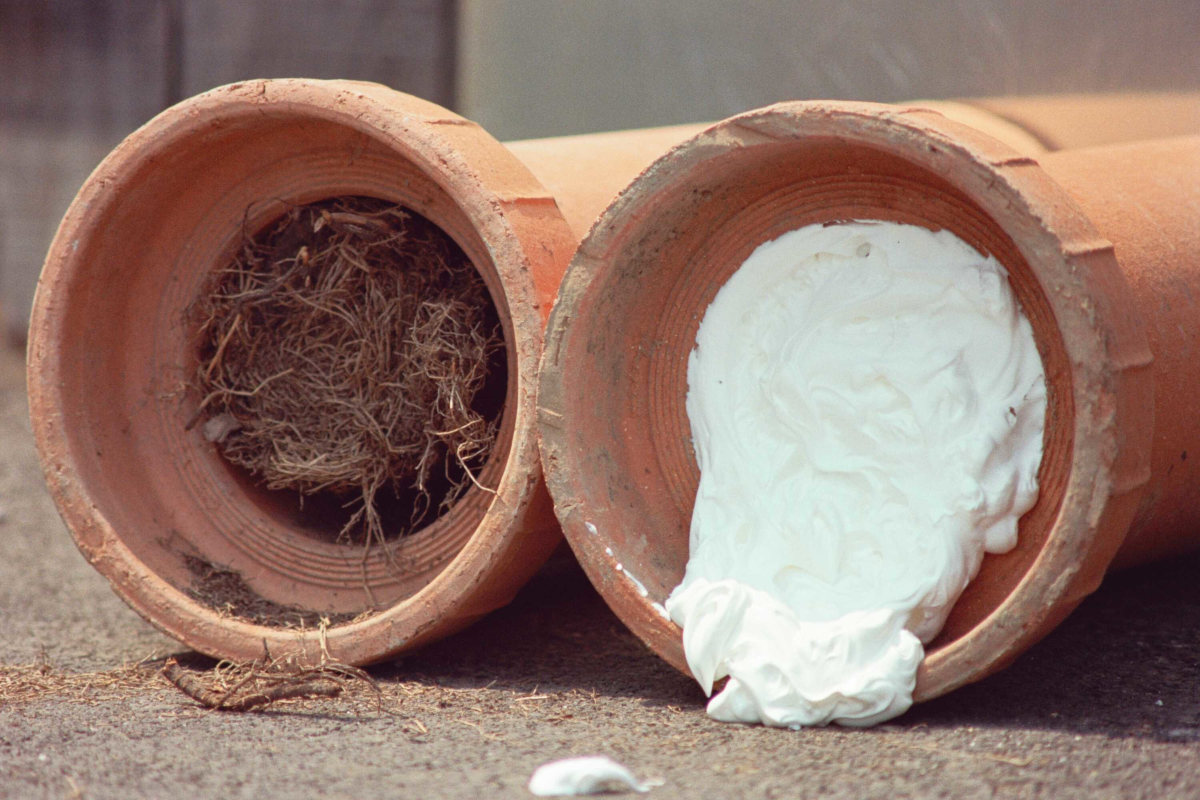
Emergency Manhole Rehab Project in Phoenix
August 12, 2016
The City of Phoenix recently completed an emergency wastewater manhole rehabilitation project at 16th Street and Colter, a busy intersection located on the north side of the city. The project highlighted the advantages of using fully structural trenchless composite insert technologies to rehabilitate a severely corroded 16-ft deep manhole that would otherwise have needed to be replaced using costly and disruptive open-cut excavation methods.Stabilizing the Situation:
An emergency call went out after City of Phoenix utility crews discovered what appeared to be a hole deteriorated through the side of a precast concrete manhole barrel section during routine inspections of their wastewater system.
After some initial jetting and debris removal work, it was clear that the bottom portion of the precast barrel (approximately 4.5 ft) was completely missing and the manhole was only being held together by soil compaction only. Immediately, the area around the manhole was barricaded to minimize the risk of collapse and JPCI Services, a rehabilitation contractor that handles these types of challenging wastewater emergencies throughout Arizona, was contacted.
Shortly after receiving the call, JPCI arrived onsite to set flow-thru plugs to ensure that the wastewater flows could continue through the manhole without disruption or need for risky and time consuming surface bypass set up. With the plugs set in place, the manhole base was rebuilt with a high-strength calcium aluminate cement to provide a foundation for the subsequent replacement or rehabilitation installation. Once this was complete, a debris shield was placed over the flow to ensure that no soil or other debris would enter the sewer line if the manhole were to collapse.
Planning the Replacement
After the manhole was stabilized and the immediate threat of collapse was mitigated, the planning effort for replacement of the manhole began. The utility location review performed for the intended excavation revealed that within 6 in. to the east was a 1,200-ft pair phone line and a fiber-optic cable, and to the west was a 4 in. high pressure natural gas line that was installed in the late 1940s. Pothole utility locating was performed and field-verified the locations of the phone line and the fiber optic cable, but the gas line could not be found where it was supposed to be (3 ft to the west from the manhole). Because of the challenging telecom utility locations and uncertainties of location of the high-pressure gas line, the decision was made to soft-dig with a vacuum excavation truck to locate the gas line and remaining utilities. Fortunately the gas line was able to be eventually located without any adverse outcomes. Unfortunately, it was discovered that the gas line ran directly over the taper on the cone section of the existing manhole.
Because of the gas line location and proximity of the telecom utilities, the manhole project had now gone from a simple replacement to a major decision by the City on how to proceed. Should the gas line utility be relocated and the manhole excavated and replaced with concrete, or should the cone be carefully removed and a fully structural rehabilitation insert of some type be installed instead?
Critical Decisions Made
After a short time, it was further discovered that the manhole had begun to shift and the cone section was subsequently removed to lighten the load on the already weak structure. This allowed the engineer to get a very good look at the inside of the manhole and see firsthand the dire situation. There were two options at this point. Option #1: set up an aboveground bypass for the two 24-in. sewer line connections into the structure and replace the entire manhole at an estimated time duration of 21 days, or Option # 2: select a fully structural, HS-20 load rated composite insert material to complete the manhole replacement in approximately one day. Comparative cost estimates for the two options were also dramatically different. The removal-and-replacement option was estimated to cost a total of nearly $69,000, while the fully structural trenchless rehabilitation option came in at less than half, with an estimated cost of around $27,000. The decision on how to proceed became obvious.
The Solution
The City selected the fully structural composite approach for rehabilitation of the manhole instead of the costly, time-consuming and difficult open-cut replacement option. Sewer Shield Composites, a trenchless manhole rehabilitation product manufacturer located in Mesa, Ariz., had the composite barrel material on hand and ready to install. Shortly after being given the notice to proceed, the manhole was lined with the Sewer Shield Composite HS-20 load rated, filament wound, free standing manhole insert. The installation of the composite manhole insert system took approximately three hours, and after insertion and placement of the barrel sections, the annular space was filled with a hydrophobic grout and the upper portion of the manhole was slurry back filled with half-sack slurry.
The manhole was subsequently plated and traffic was restored that afternoon. Within three days, the asphalt pavement was replaced and the manhole bench was lined using 98 percent acid resistant Sewershield 100 epoxy coating/lining, which is compatible with the composite insert system. The upper portion of the 24-in. drop connection was then reestablished and the fully structural rehabilitation of the manhole was complete.
The use of manhole inserts (either composites or polymer materials) for live-line rehabilitation applications provides a true and verifiable fully structural repair solution. By comparison, manhole coating and lining systems (epoxies, poly-ureas, and polyurethanes) along with cementitious resurfacing materials, commonly used for trenchless rehabilitation applications can only be considered to be semi-structural, and can be inconsistent with reliance on proper substrate preparation and field conditions to determine how they are going to cure and ultimately perform. If there are adverse weather conditions during an emergency situation or issues with surface preparation, there will almost certainly be a problem.
Fully structural pre-manufactured inserts feature an extremely long warranty, with 25- to 50-year warranties commonly offered, and the advanced manufacturing and QA/QC processes ensure that the insert systems are produced of the highest quality. Due to the simplified in-field installation process, most of the “human error” component of installation is removed. By limiting the work that field staff has to do in a hostile environment, reduced risks to health and safety hazards are also realized. Although the cost is slightly more than a typical high quality coating/lining manhole rehabilitation application, using fully structural composite inserts are usually significantly cheaper than most open cut replacements and provide the municipality with a best value, lifetime manhole rehabilitation solution.
Joe Nuciforo Jr. is with Sewer Shield Composite.




